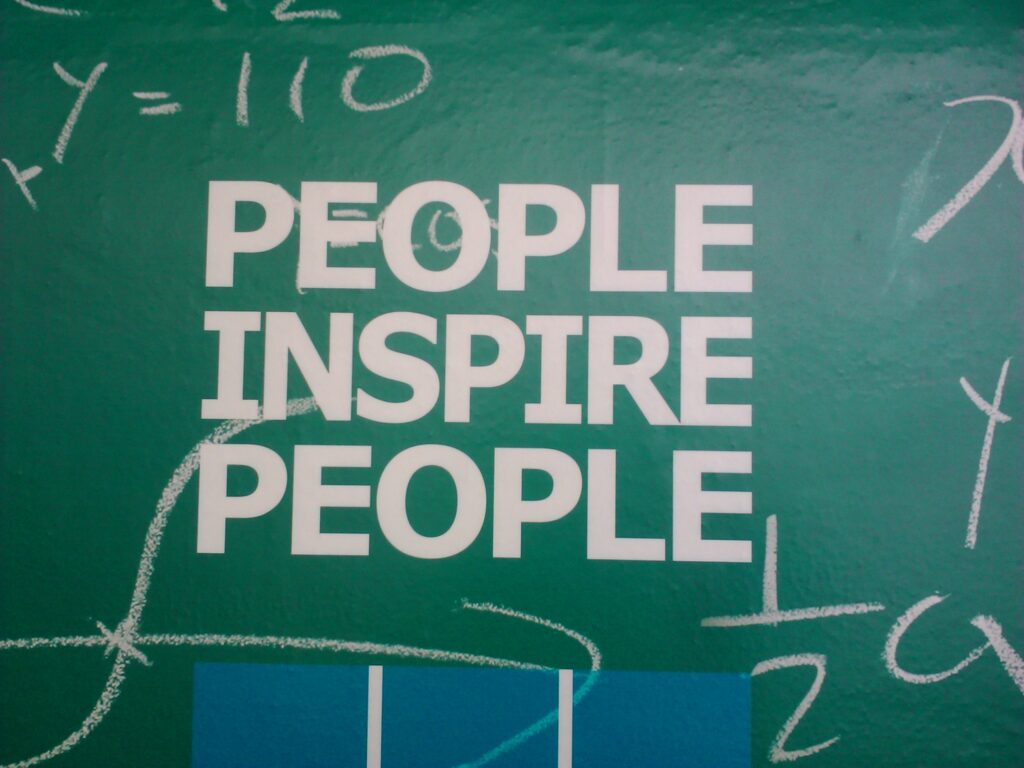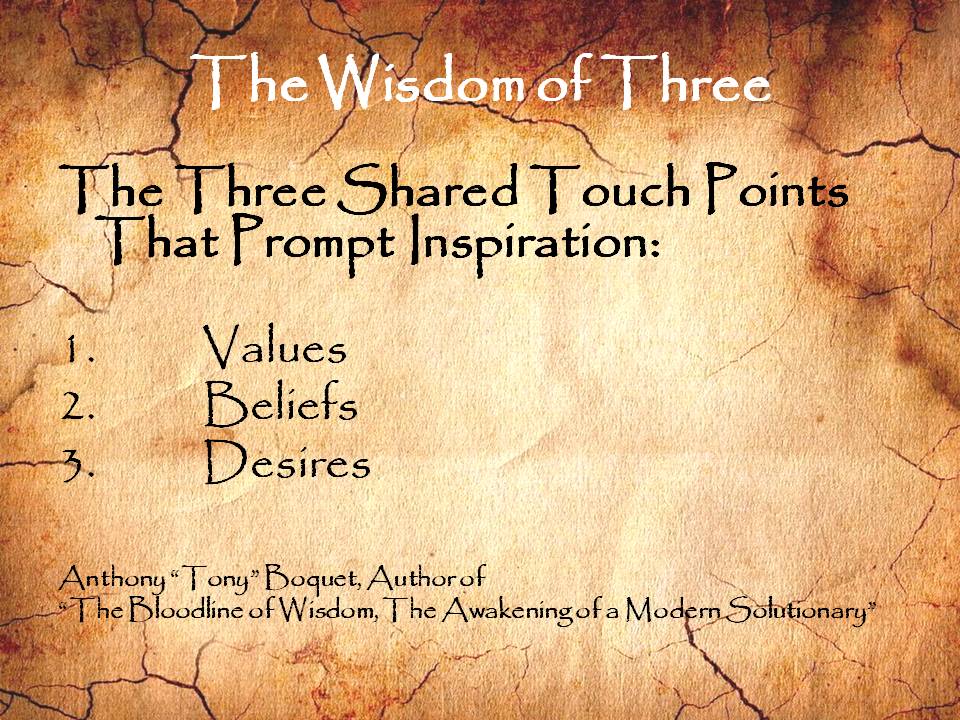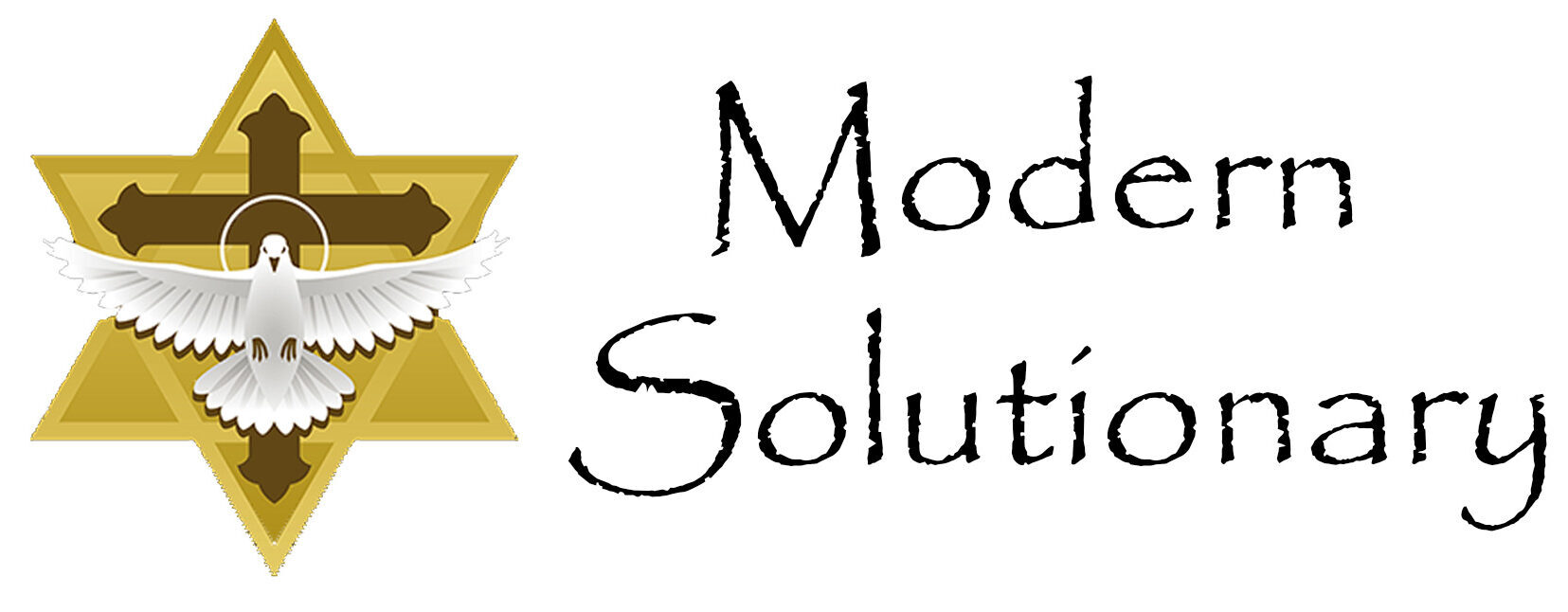
Inspiration: something that makes someone want to do something or that gives someone an idea about what to do or create.
- : a force or influence that inspires someone
- : a person, place, experience, etc., that makes someone want to do or create something
- : a good idea
Source: Merriam-Webster’s Learner’s Dictionary
A good idea: I like those, but have you ever considered why something might sound like a “good idea” to one person and “not such a good idea” to someone else. I have, and here is what I discovered, through my 40 years of leadership and research experience.
Every leader, coach, or parent would like the people that they care about to be inspired to do the right things. To do so, they go out of their way to create an inspired office or home culture and environment; they introduce them to other inspired people such as a supervisor, life coaches, or other outstanding parents. This interaction supplies a continuous array of new ideas, suggestions, and guidance offered directly from them. For all of these efforts to pay off, ultimately delivering a “good idea”, this inspiration has to be freely accepted, embraced, and personalized.
What is needed to make that those things happen; guaranteeing the conviction of a “good idea” offered as inspiration?

Once more we turn to the Power of the Wisdom of Three for the answers. For inspiration to be received the process begins by matching certain touch points. The first of which is our shared values. Our values are those ideals which we hold dear; values such as honesty, integrity, loyalty, courage, trust, and generosity, just name a few. Some say that there are over four hundred values, not all of them positive in nature. People need, crave, and seek out a psychological bond with those whom they interact. Whenever we communicate with anyone or find ourselves in a new place, we immediately begin to compare our values with those we meet. On a subconscious level, this will either attract us or repel us. The progression of inspiration will only move forward if we are attracted by common values.
The second touch point that must be shared in order to progress toward a state of inspiration is on the level of common beliefs. We can only be inspired by those places, persons, or things that we believe in. When we find that we share common values and then find that we believe the same things we continue to build that bridge we call inspiration.
Once we discover that we share common values and believe many of the same likes and dislikes, we are just one point away from that feeling of inspiration. The third and final required touch point on our journey seeking the power of inspiration is one of desires. As we complete this mental connection, it is our shared desires that wrap the circle back around to the value of unity, the belief of success and the desire to accomplish, attain, or emulate the inspired person, place or thing.
It is worth noting that these shared touch points do not have to be true, positive, or even real to create that common attraction, bond, and inspiration obtained through these shared touch points. That is why people are sometimes drawn away from the truth, honest success, or people of high moral/ethical character. We see this often with young adults. The child is raised in a positive home with an environment created by strong moral values, they have a successful start to a good education back by beliefs shared by their parents, and they have strong desires to finish school, find profitable employment, and start a loving family of their own. Life is good and getting better; then, what seems to be out of nowhere, things shift in the opposite direction.
People who love them look back and say, “What happened?”
The young man or woman met new people, experienced new things, or was introduced to very captivating new place, all of which slowly began to change their personal values, beliefs, and desires which in turn redirects what inspired them. If someone they trust can catch this negative drift early, they have an opportunity to guide their life back on a positive track. I have always used the analogy of a locomotive engine and the railroad track. A locomotive is a strong and powerful engine. If it leaves the track, and the engine stays on its wheels, it can travel miles from the track before coming to a stop. This distance can make it extremely difficult to place the engine back on the track. However, if the engineer stops the engine as soon it derails, it can be easily lifted back onto the track and usually continue on the journey. So it is with strong willed people. When left to their own accord, if they leave the track, they can travel far off course making it harder and harder to put them back on track. If the “engine” is aided by a trusted “engineer” when the engine leaves the chosen track, they can immediately put the brake on; stopping the misdirection and assist in putting the person back on track. In this analogy the direction will ultimately be determined by the values, beliefs, and desires of the young person and the source of their inspiration.
If this is my last post, I want all to know there was only one purpose for all that I have written; to have made a positive difference in the lives of others.
Anthony “Tony” Boquet, the author of “The Bloodline of Wisdom, The Awakening of a Modern Solutionary”
